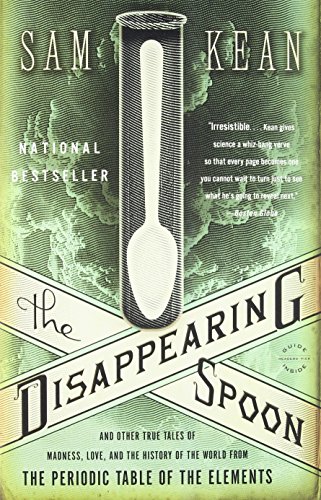

For example, I was fascinated by the story of molybdenum’s role in the First World War, how Germany secretly exploited the only industrial source, which was located within the United States, and the similar story of tungsten in the Second World War and Portugal’s shrewd but morally dubious cornering of the market. This book was highly successful in terms of teaching me new and interesting things! I will likely forget most of the anecdotes Kean shares here, but some will stick with me.

Some stories are highly scientific, others are industrial, and others still are tragically personal. (Interestingly, the book’s explanation for why it’s unlikely there are more than 137 elements is incorrect, perhaps somewhat oversimplified or outdated.) In between, however, Kean groups elements together based on the types of stories he has dug up about them. The last chapters discuss the future of elemental chemistry and particle physics, meditating on such lofty questions as the maximum number of elements out there. The first chapters explore the origins of our knowledge of elements and the creation of early periodic tables (or equivalent structures). The Disappearing Spoon is a blend of physics and history, science and sociology.Īlthough loosely chronological, Kean’s organization is more thematic than anything else. Sam Kean takes us on a journey through the periodic table: its history, the properties of its elements, and how those elements have fascinated/charmed/influenced our lives from ancient times to the modern era. Talk about lengthy subtitles! This book has a retro styling to it, but scratch the surface and you’ll find it quite modern in its outlook.


 0 kommentar(er)
0 kommentar(er)
